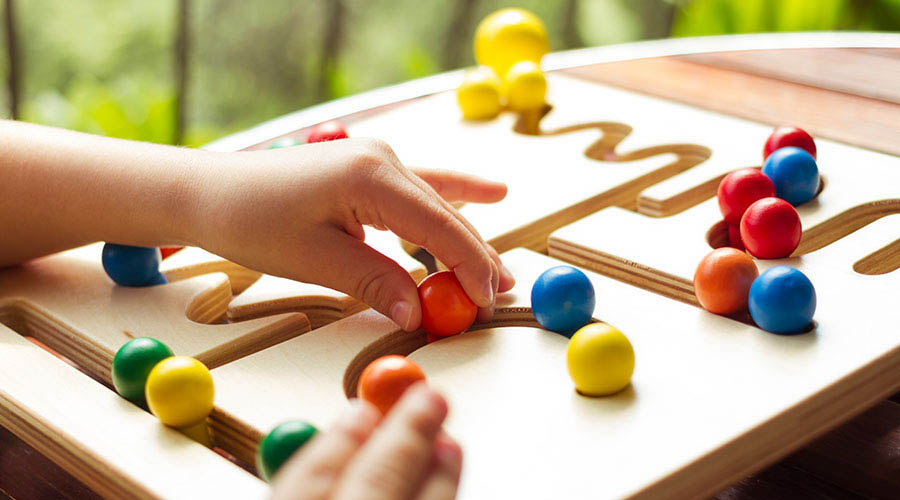Occupational therapy intervention in autism spectrum disorder (asd)
By: Monika Verma
Autism is a developmental disorder that affects communication and behaviour.According to the CDC, the current evidence is 1 in 68 children have been diagnosed with autism spectrum disorder (more so in boys than girls). There’s a range of how it affects each children in communication, behaviour and social skills.Some child are so high-functioning that it’s hard to tell they have any challenges, while others need much more support in their daily lives . Here’s what living with autism looks like.
In the evaluation and treatment of individuals with ASD, OT professionals tend to work in these areas like ADLs, IADLs, sleep pattern, social participation, communication skills,sensory issues,behaviour skills .Underlying these issues, therapists seek to improve performance with gross motor, fine motor, and visual-motor integration skills; visual perception; sensory processing, behavioural modification, social skill, cognitive skills , Daily living task , play based therapy etc.
Assessment of ASD by using Short sensory profile, Sensory profile,Autism checklist,Childhood autism rating scale (CARS),Sensory Integration And Praxis Test(SIPT).One of the main symptoms for individuals with autism is an inability to process all the different sensory inputs in their environment. Many times child on the spectrum have hypersensitivity to sights and sounds. This generally leads to an increase in anxiety and stress. A child with autism may flap their arms, rock back and forth, or make other “unnatural gestures”.Some of the child have Sensory Seeking behaviour like humming, chewing non- food objects (Pica), some of the child have Low Registration like tired, doesn’t notice what is going around them?Some are Sensory Avoidinglike withdraw the situation to reduce sensory input , Some are Sensory Sensitivity which is very sensitive,distractible, aware of sensation.
One of the ASD child whose age is 4 year old girl .The girl have an issue of Auditory,Vestibular,Visual and Proprioceptive senses .These are the symptoms which I have been observing during therapy time like she has toe walking,running around,Doesn’t sit at one place, Create different humming sound,Shows anxious behaviour ,crying most of the time,fixation of the objects ,no fear about the height,less eye contact ,lack of command following ,behaviour issues, lack of social interaction,She is a non -verbal child.
Below is the Approach I follow when it comes to handling ASD child
Every autistic child needs a sensory diet which is carefully designed, personalized activity plan that provides the sensory input a person needs to stay focused and organized throughout the day.
Treatment Approaches:-
1.Sensory Integration Approach– It is the neurological process that organizes sensation from one’s own body and from the environment and makes it possible to use the body effectively within the environment it including brushing, therapy balls, weighted vests, warm‐ups, sensory stimulation, swinging ,sensory diet,To improve Tactile,Vestibular and Proprioceptive ,Visual processing skills.
2. Sound-based Interventions:-It involves to listening the music in a high tone or low tone which is according to the child’s interest or used as combined treatment with Sensory Integration approach which improve the Auditory processing skills.
3. Weighted blankets:-Occupational Therapists may work with individuals to establish healthy sleep routines .Weighted blankets are an example of a sensory-basedintervention commonly used in helping children with autism spectrum disorders toattain adequate sleep participation. It’s providing deep pressure touch without movement restrictions.
4. Weighted vests:-Weighted vests have been used for individuals with ASD to influence theirSomato-sensory systems. Specifically, weighted vests are often used to provide deep pressure for individuals who demonstrate sensory over-responsiveness, and resistance to those with sensory under-responsiveness/seeking behaviours. However, the use of weighted vests has become popular within thechildren’swith ASD forincreasing attention, on-task behaviour and social engagement.
5.Task-oriented treatment approaches:-Task-oriented treatment approaches assist children with ASD to develop the skills necessary to complete a particular task. Children with ASD often have difficulty completing tasks due to a variety of difficulties in communication, socialization, motor skills, and sensory processing. Task-oriented approaches consider the task to be completed and ways in which to accomplish the goal.
6.Treatment and Education of Autistic and Related Communication-HandicappedChildren (TEACCH):-It uses visual cues to teach skills and organize the task with explicit directions in order to assist the child in learning new skills that aid in improved functional outcome .For example, picture cards can help a child to teach how to get dressed up and used these steps by breaking information down into small steps.
7.Cognitive Orientation to Occupational performance(CO-OP):-The Cognitive Orientation to Occupational Performance (CO-OP) is a task-oriented, problemsolving approach that uses cognitive skills to improve occupational performance.CO-OP is “the goal, plan, do and check” in ASD to enhancing function and participation in meaningful activities as a part of activities of daily living and instrumental activities of daily living .
8.Behavioural treatment approaches:-When considering ASD, the primary behavioural treatment approach used is Applied Behaviour Analysis (ABA), which is applied in a variety of forms (school-based, clinic-based, Home based).
9.Applied behaviour analysis (ABA):-Applied Behaviour Analysis (ABA) is to teach discrete skills by modifying theenvironment in order to manipulate behaviour. To teach these skills, therapists utilize the“ABC technique” to determine why behaviour is occurring: Antecedent, Behaviourand Consequencethe therapist will determine the target behaviour
andhow the environment will be modified to achieve that behaviour. Additionally, the therapistwill determine what reinforcement to use and the reinforcement schedule.
10.Social-emotional treatment approaches:-Social-emotional treatment approaches are gaining popularity within children with ASD asresearch reveals the impact of social/emotional development on all other functional areas.Embodied cognition is created only when an individual can actively engage in his or her environmentwhich requires social interaction with objects and others. To encourage theseinteractions and relationships.Social skill training like sharing materials, waiting patiently,start imitating,listening actively.
Result:-After using all these approaches for five days a week for 6month it shows good result from the child’s performance.
Recommendation-
School Activities:-Physical activity such as jumping jacks or push-ups ,Mobile seating devices such as a peanut ball, ball chair, sit-n-move cushion or therapy ball,Visual and kinesthetic supports for all learning activities,Heavy work activities such as scooter board, pushing book carts, performing errands such as carrying boxes or supplies, playing “tug-of-war,” and climbing on playground equipment,Positive behavior support strategies ,Providing chew or fidget toys such as rubber erasers and stress-balls, Scheduled activity .
Activities for home and community:–
1.Encourage tactile play with a variety of textures and temperatures and wrestling play with a lot of deep pressure. He may enjoy being sandwiched in pillows, wrapped up in a blanket and rolled out, which may feel good to him and help him increase his body awareness.
2.Play on bouncing equipment such as trampoline, bungee swings, pogo sticks, or jumping boots. Weight bearing games such as wheel-barrow walking, lifting heavy objects ,transfer the objects from one place to another.
3.Active physical community based activities such as swimming, gymnastics, horseback riding, and martial arts are encouraged.
4.Provide your child opportunities for jumping and skipping during outside play. He /She may like to draw large circles with chalk either on a blackboard or cement using both hands simultaneously.
Conclusion:–
Child hasASD needs regular sensory diet and regular therapy with use of these approaches and home based plan you will notice in child’s performance.
“The thing about being autistic is that you gradually get less and less autistic, because you keep learning, you keep learning how to behave.
It’s like being in a play; I am always in a play.
……….Temple Grandlin


Very well explained with good content 👍👌